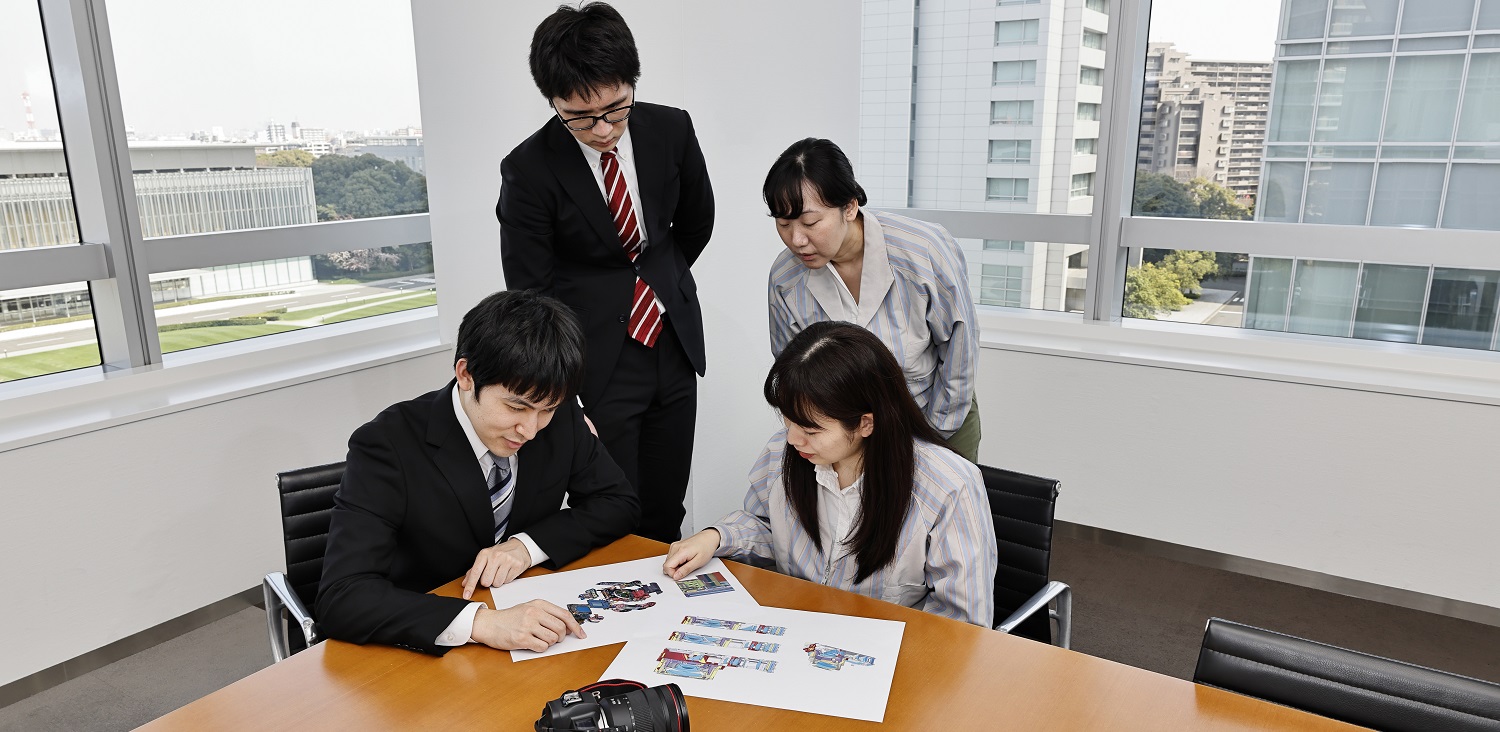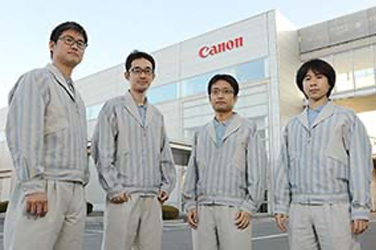

Intellectual Property Activities
Common refrains heard within Canon’s research and development division include, “Read patent bulletins rather than research literature” and “Create draft patents rather than reports.
Intellectual property management protects proprietary technologies while expanding the number of technologies that Canon can access through such means as cross-licensing to enhance product development capabilities.
April 30, 2025
Canon places in top 10 for 41 years running in U.S. patent ranking and ranks first for the 20th consecutive year among Japanese companies
Canon believes that acquiring patent rights for its proprietary technologies is an essential aspect of expanding operations globally. In the United States, Canon has been the top-ranked Japanese patent recipient for 20 straight years. Canon’s intellectual property strategy consists of a defensive approach: protecting Canon’s proprietary core technologies from being infringed upon by others, and an offensive approach: creating advantages for Canon’s operations by acquiring valuable patents that other companies, not just Canon, need to use, and then negotiating licenses for their use. Canon strengthens its product development capabilities through both defensive and offensive intellectual property management.
Top 15 companies by number of US patents obtained in 2024
Rank |
Patent holder |
Number of patents |
1 |
Samsung Electronics Co Ltd |
6,377 |
2 |
Taiwan Semiconductor Manufacturing Co TSMC Ltd |
3,989 |
3 |
Qualcomm Inc |
3,422 |
4 |
Apple Inc |
3,082 |
5 |
Huawei Technologies Co Ltd |
3,046 |
6 |
LG Electronics Inc |
2,768 |
7 |
Samsung Display Co Ltd |
2,596 |
8 |
International Business Machines Corp |
2,465 |
9 |
Canon Inc |
2,329 |
10 |
Google LLC |
2,054 |
11 |
Intel Corp |
1,931 |
12 |
BOE Technology Group Co Ltd |
1,870 |
13 |
Micron Technology Inc |
1,796 |
14 |
Toyota Motor Corp |
1,779 |
15 |
Microsoft Technology Licensing LLC |
1,707 |
Number of patents are based on figures released by IFI CLAIMS Patent Services (as of January 15, 2025).
Patent Strategy to Tackle Xerox’s Monopoly
Canon’s emphasis on intellectual property rights dates back to the 1960s, when the company entered the copying machine market.
In order to break through the airtight patent wall that U.S.-based Xerox had erected for its copying machines, Canon succeeded in developing the NP method, an all-new electrophotographic technology that did not infringe on Xerox’s patents. Canon obtained a patent for the NP method. By protecting the differentiated proprietary technology, and also acquiring patents for peripheral technologies, Canon put itself in the position to be able to negotiate license agreements for other companies’ technologies that Canon needed. This experience created the foundation for Canon’s intellectual property strategy and has been passed down through the generations as part of Canon’s corporate DNA.
Engineers Work Closely with Patent Engineers to Cultivate Ideas
One major characteristic of Canon’s intellectual property strategy is the active exchange of communication between development engineers and patent engineers, who are in charge of intellectual property. Some 300 patent engineers at Canon operation sites throughout Japan examine new ideas and the research results of engineers from various angles, searching for ways to maximize the number of inventions that can be generated.
Basic Policy of Canon Intellectual Property Activities
〉Intellectual property activities are vital to support business operations
〉The fruits of R&D activities are products and intellectual property rights
〉Other parties’ intellectual property rights should be respected and attended properly
Collaborations with Global Companies Boost Canon’s Competitive Edge
In this day and age, it is becoming increasingly difficult for a company to protect its technologies on its own. In a move to assert the company’s legitimacy and circumvent international patent disputes, Canon signed a cross-licensing agreement* with Microsoft in July 2014. In addition, six companies, including Canon and Google, established the License On Transfer (LOT) Network. As of November 2018, 318 companies have joined as members to protect approximately 1.36 million patents. In this way, Canon is working to coordinate with other companies to strengthen its competitive edge internationally through intellectual property.
* In a cross-licensing agreement, patent-right holders (companies, etc.) grant a license to each other permitting the use of a patent or patents held by the other party.
History of Awards for Canon Inventions
Several Canon inventions have been awarded Japan’s National Commendation for Invention (sponsored by the Japan Institute of Invention and Innovation), presented in recognition of inventions of great merit in Japan. Additionally, Canon gives special recognition to the efforts of its own engineers and other meritorious individuals for their outstanding inventions through an Internal Invention Awards system.
History of Canon’s Receipt of Special Prize, National Commendation for Invention and Internal Invention Awards over the past 20 years
Name of Invention |
Special Prize, National Commendation for Invention, |
|
Year |
Name of Award/Prize |
|
The development of an imaging sensor that realizes phase-difference autofocus on the imaging surface |
2018 |
The Prime Minister’s Award |
Invention of ultrasonic diagnostic equipment utilizing differential harmonics from two fundamental frequency components and their second harmonic in diagnostic ultrasound apparatus |
2018 |
The MEXT Minister’s Award |
Invention of shading-reduction technology for CMOS sensors |
2015 |
The Prize of The Chairman of Japan Business Federation |
Design of a compact, lightweight digital cinema camera with outstanding mobility |
2014 |
The Prime Ministers Prize |
Invention of a printer using intermediate transfer member, without a cleaning mechanism |
2013 |
The Prize of The Minister of Education, |
Box-shaped inkjet printer |
2006 |
The Asahi Shimbun Prize |
Large-area sensor for real-time digital radiography system |
2005 |
The Imperial Invention Prize |




